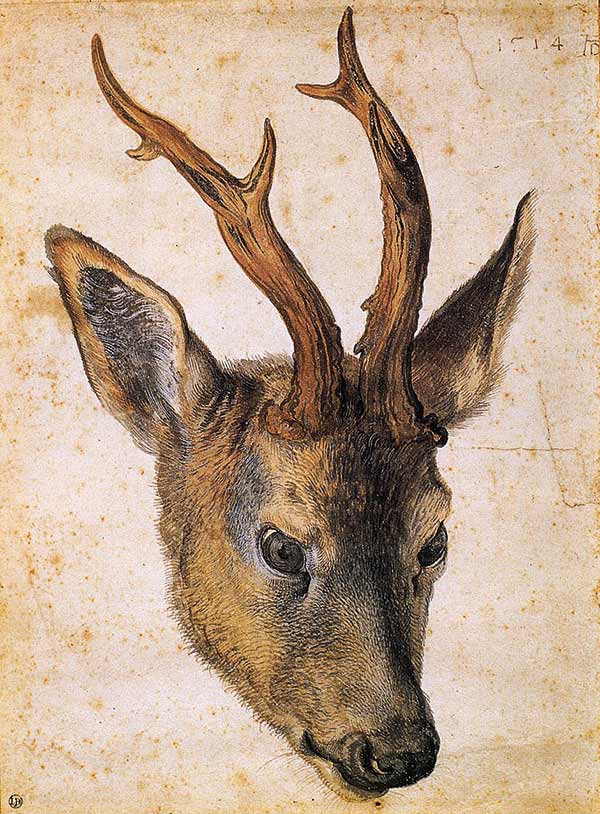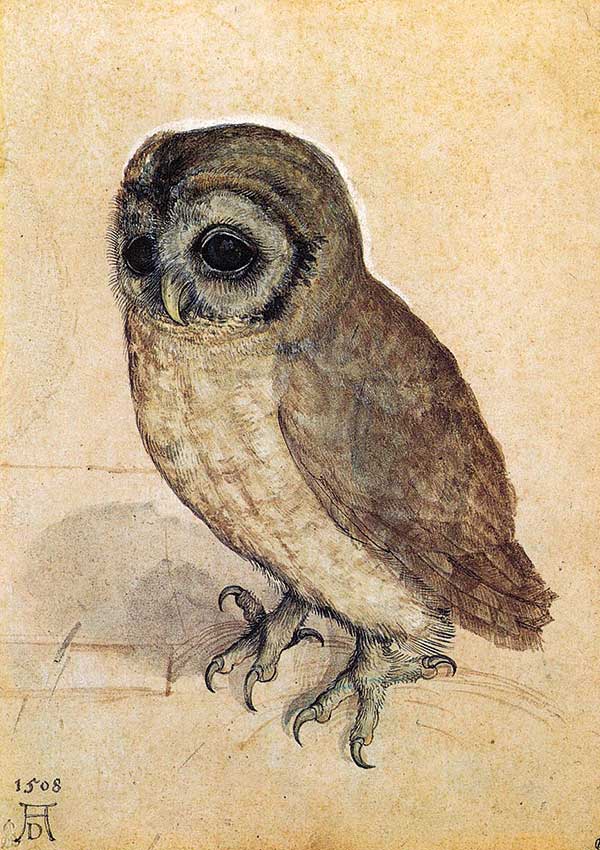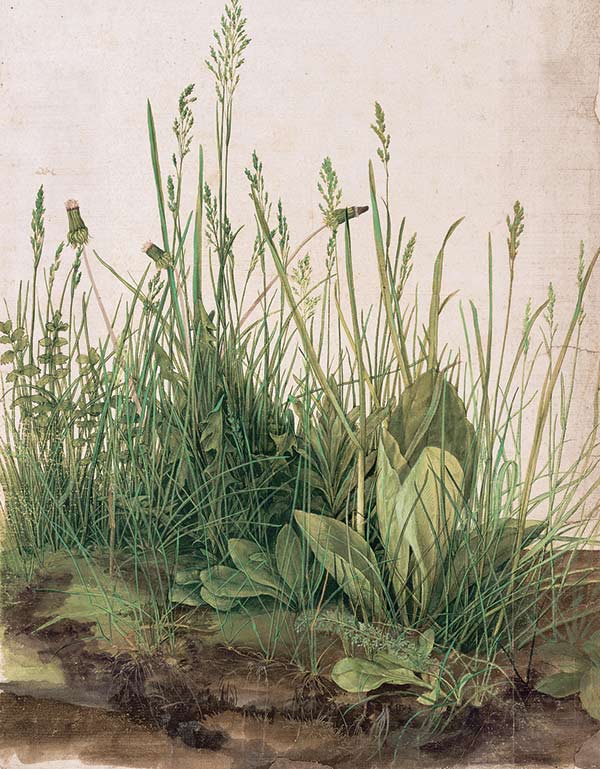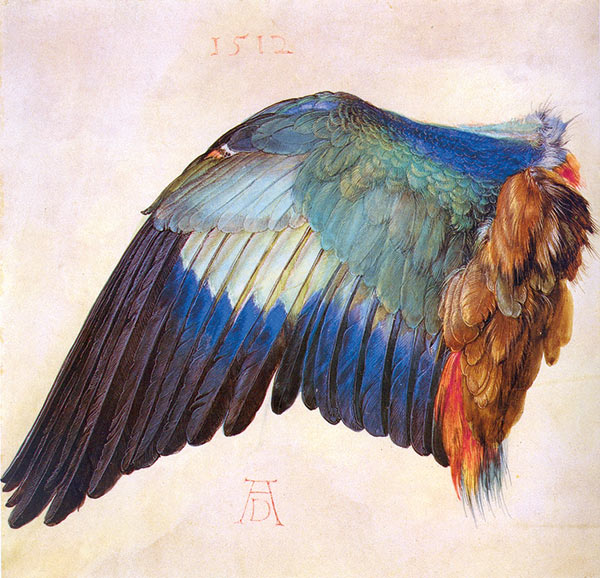Subtotal: $
Checkout-

Meeting the Wolf
-

Saskatchewan, Promised Land
-

The Plants Can Talk
-

Saving the Soil, Saving the Farm
-

The Wonder of Moths
-

The Leper of Abercuawg
-

Dandelions: An Apology
-

A Wilderness God
-

Why I Hunt
-

Reading the Book of Nature
-

Breakwater
-

Lambing Season
-

Earthworks Urban Farm
-

Are You a Tree?
-

Practicing Christianity
-

Who Gets to Tell the Story?
-

A Medievalist Looks for the Image of Christ
-

In Defense of Chastity
-

Poem: “Let Them Grow”
-

Poem: “Squall”
-

Readers Respond
-

GEDs for Myanmar Migrants
-

Inside Nyansa Classical Community
-

Watching the Geminids
-

A World Full of Signs
-

Covering the Cover: The Riddle of Nature
-

Back from Walden Pond
-

Can Masculinity Be Good?
-

Nature Is Obsessed with Me
-

Ancient Songs in the Desert

The Sadness of the Creatures
Should humans live by the laws of nature?
By Peter Mommsen
February 26, 2024
Next Article:
Explore Other Articles:
The day I butchered my first lamb was one of those hot but brilliant September Sundays. My friend Achim had come from the next village over – our family was then living in rural Thuringia – to supervise and coach. A former East German police officer, Achim had his own flock and decades of experience, as well as the required bolt gun. We were living on the meager income from a start-up landscaping business at the time, and there was never enough protein in the house. But there were a couple of unused pastures next to us, so it made sense to get some sheep and goats. After a string of newbie-farmer setbacks – some of the animals died after being fed leftover birthday cake by a well-meaning neighbor – it was finally time to get some meat.
Achim believed in the old ways and had brought his traditional wooden slaughtering bench, setting it up on the pavement by the garage over a storm drain. He helped bring up the first victim. At seven months, the animal had lost the loveliness of early lambhood for the strongly scented boorishness of an almost-sheep. But as we heaved him up onto the plank, before the bolt gun started the process that would turn him into crown rib and shoulder roast, I glimpsed his eyes, moist and beautiful.
That evening we feasted together on Achim’s specialty – stomach flap of lamb rolled up like a crepe with the sliced kidneys inside, seasoned with loads of caraway before braising in beer – plus his homemade cherry wine. It was a good day. But the look in the animal’s eyes stayed with me, and with it the sense of connection to a fellow living creature whose life was sacrificed for my benefit. The poet W. H. Auden captured this feeling hauntingly:
Our hunting fathers told the story
Of the sadness of the creatures,
Pitied the limits and the lack
Set in their finished features;
Saw in the lion’s intolerant look,
Behind the quarry’s dying glare,
Love raging for the personal glory
That reason’s gift would add…
A sense of connection in our shared experience of conscious life. But also an unbridgeable distance between the animal’s world and mine.
Today, the sacrifices that humans extract from sad creatures are largely out of sight and mind, and with this remove, our connection to them. Our daily lives have become ever more urbanized and screen-bound; only 4 percent of Europeans and 2 percent of Americans are full-time farmers.
Yet where connection grows thin, the significance of what sets us apart from the rest of nature slips from sight as well. Many moderns are unsure of what difference, if any, marks us out from other living beings on our planet, and of what our place in the natural world ought to be.
What can nature itself tell us about how to live within it?
Since the industrial revolution, our species, flush with technological mastery, has exercised unprecedented dominance over nature, with consequences that are now catching up with us. The litany of ills is by now a cliché, though no less true for that: pollution, deforestation, habitat loss, climate change, a mass extinction unequaled since the Cretaceous. Add to that list the effects of the industrial agriculture that feeds us, including soil exhaustion, poisoned aquifers, and “concentrated animal feeding operations” in which hundreds of millions of animals are held, a system far removed from Achim’s style of farming. Even our dogs seem to suffer from high rates of anxiety, according to a 2019 study published in the Journal of Veterinary Behavior, likely in part because of their unnaturally confined and sedentary lifestyle.
Over the past decades, an environmentalist movement has risen in protest against these destructive habits. Less clear than the fact of exploitation is the solution. Some advocate harnessing technology and finance to promote sustainability. Others urge us to abandon technological capitalism and pursue degrowth. Not a few argue that there are simply too many humans – that population decline, or even human extinction, would be good news for the planet.

Albrecht Dürer, Head of a Stag, watercolor, ca. 1503.
Since the industrialized West bears chief responsibility for environmental collapse, many point to the West’s historically dominant religion, Christianity, as a key culprit. This helps explain why paganism is one of the fastest-growing faiths in erstwhile Christendom, with strong appeal to Millennials and Gen Z; according to a 2014 Pew study, around one million Americans identify as pagans or witches, up from just a few thousand in 1990. In its critics’ view, Christianity is guilty of using the Genesis command to “fill the earth and subdue it” as a license to exploit. Its alleged dualism, privileging the soul over the flesh, has led to contempt for the body and for biological life more generally, claiming human exceptionalism where it should see the unity of life.
Paganism offers an alluring alternative. We humans, pagans suggest, are not to claim arrogant superiority over nature – we’re just part of it. As a self-identified Green Witch explained to Quartz, her faith involves “a deep adherence to nature and natural law, an attention to the cycles of the earth and the lives within it.” Nature is charged with divine power, as ancient pantheism taught; whatever god there is dwells within it, not outside it. Talk of human exceptionalism obscures our kinship with other living beings.
These ideas, which date back to the pre-Christian era, resurfaced in the nineteenth century and have grown in parallel to industrialization. In 1939, for example, such ideas were advanced by an anonymous editorialist:
To us, God is manifest everywhere in nature, because nature is sacred, and we worship in it the revelation of an eternal will. Seen in this light, the animal is, in our eyes, actually a “little brother,” and our sensibility considers that assaulting a man able to defend himself is more morally acceptable than any cruelty towards a defenseless creature.
These reflections appeared in the SS journal Schwarze Korps, as quoted in Johann Chapoutot’s 2018 The Law of the Blood: Thinking and Acting as a Nazi. The book is a fascinating exploration of how such a tender idea – the sacredness of nature, animals as our little brothers – was used to justify the least tender and sacred behavior ever known.
Not that the Nazis’ conclusions are inevitable, as we can see from the variety of modern paganisms, most of them simply seeking oneness with nature’s harmony. But nature is also harsh and brutal, and an ideology that “worship[s] in it the revelation of an eternal will” opens itself to embracing the dark side of its law.
The Nazis focused on certain scientific facts that a green paganism would prefer not to see. The main lesson they drew from nature was one of systematic cruelty: the domination of the weak by the strong, the elimination of the unfit, the merciless competition for survival. “All Life Is Struggle” (Alles Leben ist Kampf) is the title of a 1937 propaganda film that promotes eugenics and a sterilization campaign. The film aims to rid viewers of any residual Christian conditioning that might tempt them to protect the vulnerable. Between scenes of fighting stags, monkeys, and boars, intertitles admonish: “Only the best genes are passed on.… What is weak or unfit for life must succumb to the strong. Nature allows only the best life forces to survive.”
If we moderns have trouble reading the book of nature, perhaps that’s because, unlike our pre-industrial forebears, we lack practice.
It’s a grim vision. Yet when judged by the evidence of evolutionary biology, the film’s understanding of nature gets nearer to reality than does that of modern solstice celebrants at Stonehenge. Fatefully, it makes the additional step of counseling its audience to live in accordance with nature quite literally – to adopt its ruthless ways as their own. Contrary to the teaching of the Abrahamic religions, it suggests that humans are not exceptions to the law of survival of the fittest, nor should they want to be. The Christian doctrine of dominion, in which humankind’s unique calling is to act as creation’s steward in God’s stead, is rejected in favor of embracing our biological drives. Heinrich Himmler expressed these ideas in 1942:
It is time to break with the folly of these megalomaniacs, in particular these Christians, who speak of dominating the earth; all of that must be brought back into perspective. There is nothing particular about man. He is but a part of this world.… Man must relearn how to see the world with worshipful respect.
This would sound positively humble if one forgets that Himmler was then commanding Einsatztruppen on the East Front in a genocidal bid to expand the German people’s habitat (Lebensraum). His “worshipful respect” involved shedding “anti-nature” inhibitions such as pity for the victim, grounded as they are in supernatural beliefs. As one likeminded professor of eugenics put it in a 1937 lecture: “We are all a part of nature, we result from nature’s law. Why should our intelligence deviate from understanding nature’s laws to explore any kind of ‘metaphysics,’ anything ‘supernatural’?” Nature is all there is, and from its law there is no appeal.
Similar writers traced Christianity’s belief in the supernatural and its supposed contempt of nature to its Jewish inheritance. As the SS leader Richard Walther Darré explained, Jews and Christians share a faith in “Yahweh, the vengeful, Eastern, non-native god of the deserts, come to devastate the forests and lakes of verdant Europe.” Like an invasive microbe, the body-denying spirituality of Jewish-derived Christianity threatened to destroy indigenous Europeans’ joy in bodily life.

Albrecht Dürer, The Little Owl, watercolor, 1508.
It’s worth asking if there are any lessons to draw. Here, after all, is the most vivid test case of a formerly Christian society that chose to revert to nature’s law. It illustrates the outer implications of a certain form of paganism. If one denies any distance between humankind and nature, it’s hard to see what could be wrong with “might makes right.”
In an increasingly post-Christian age, this history has renewed salience. To be sure, the 2020s are not the 1930s, and to suggest tidy equivalences would be foolish. But certain strains run through. The belief that unfit lives are not worth living, for example, has regained a foothold through the prenatal elimination of babies with Down syndrome and the euthanasia of people with disabilities; both practices are now widespread on both sides of the Atlantic, typically championed by progressives with environmentalist sympathies. For its part, the new right with its Bronze Age fantasies of “sun and steel” has few objections to the new eugenics either. Its exponents champion the strong over the weak, mock Christianity’s solicitude for the vulnerable, and obsess over supposed racial distinctives, including by reviving old-fashioned anti-Semitism. The de-Christianized “law of nature” has a knack for reappearing in new times and guises.
Contra its critics, not to mention its careless practitioners, Christianity’s true relationship to nature is not one of contempt or disassociation. According to one ancient church tradition, while nature must not be our source as a law to live by, it still bears a different kind of meaning: as a book to be read. This image goes back at least as far as a third-century Desert Father, Anthony the Great.1 Anthony was an illiterate former swineherd who spent fifteen years as a hermit in the Egyptian wilderness before founding one of the first Christian monasteries. Because he could not read scripture, Anthony turned to nature: “My book is the created nature, one always at my disposal whenever I want to read God’s words.”
If we moderns have trouble reading the book of nature, perhaps that’s because, unlike our pre-industrial forebears, we lack practice. Like a Tolstoyan novel with dozens of characters and an intricately interwoven plot, nature’s book, if laid aside for too long, quickly ceases to hang together and make sense. The baffled reader is forced to start again from the beginning.
That is my experience, anyway. In my mid-twenties, after three years spent mostly indoors with other people or my laptop (I’d been running a magazine), I suddenly found myself with hours of free time alone. After work, I’d go daily into the woods of southwestern Pennsylvania. Most days, somewhere along the trail I’d run into Arthur Woolston, an English naturalist and fellow Bruderhof member then in his eighties.
Arthur was a slight, stooped man with a short white beard, a pair of binoculars, and a face filled with delight. We’d stop for five minutes or half an hour, and he’d point out something about the woods around us that I’d either forgotten or never known: the species of that fern or fungus, the identity of an unseen hermit thrush, how to tell the difference between a Norway and Sugar maple. His family, I knew, worried about his long solitary rambles – he had a heart condition – but no one dared ask him to stop. The intensity of his joy in the natural world seemed concentrated by his awareness that he would soon have to leave it.

Albrecht Dürer, The Great Piece of Turf, watercolor, pen and ink, 1503.
Arthur was a walking Peterson field guide to birds, trees, insects, and animal tracks. His relatives once lent me his unpublished autobiography, four hundred typed pages describing his itinerant life in Britain and South and North America. His account tended to pass over the milestones that most people construct their life stories around. Instead, it would dwell lovingly on a dozen birds and wildflowers he’d seen one day in 1946 while walking through the Paraguayan jungle to his job at a sawmill, giving the species in both English and Latin. Learning to name the creatures, Arthur knew, can be the first step to paying them proper attention. The reward is the thrill of recognition, even of kinship.
To read the book of nature, you have to actually pay attention – go out and fill your gaze with the stars, or a forest, or a deer. Without this practice, the book is illegible, and it is difficult to make sense of the Psalmist’s claim that the “the heavens declare the glory of God, and the sky above proclaims his handiwork.” Similarly, it will be hard to follow the apostle Paul’s argument that “what can be known about God is plain to [human beings], because God has shown it to them. For his invisible attributes, namely, his eternal power and divine nature, have been clearly perceived, ever since the creation of the world, in the things that have been made.”
How can that be if nature is as cruel as evolutionary biology tells us? Far from manifesting peaceful unity, it is as “red in tooth and claw” as Darwin described, possessing not only beauty and order but also pathogens and parasites. “All life is struggle” is only partly false; the ruthlessness the Nazis admired is undeniably there.
Though he predated Darwin by fourteen centuries, Augustine of Hippo wrestled with similar questions, wondering in his Confessions, for example, how a good God could have created repulsive insects. It’s worth noting that Augustine never regarded the book of nature as showing a static perfection, all harmony and innocence. Instead – to paraphrase Rowan Williams – Augustine described natural phenomena as emerging from a world in flux, where nothing other than God is changeless or deathless, and competing forces are always at work upon one another. We must acknowledge, Augustine thought, that not everything in nature is orderly, purposive, or beautiful; yet nature shows a remarkable tendency toward order, purpose, and beauty, as if drawn toward them. It is in this tendency, he believed, that we perceive the hand of a good Creator.

Albrecht Dürer, Wing of a Blue Roller, watercolor on vellum, 1512.
In science, the intelligibility of nature, its tendency toward order, is itself a wonder. “It could be said that the eternal mystery of the world is its comprehensibility,” said Einstein. “The fact that it is comprehensible is truly a miracle.” There’s the remarkable fact, for example, that the universe is not arbitrary, as it conceivably might be, but runs according to discernible natural laws that are (as far as we know) valid everywhere and always. For instance, the maximum speed of light, the laws of gravity, and the mass of an electron are apparently the same anywhere in the universe and at any stage of its development. These laws, further, can be described by mathematics – a logically coherent and purely intellectual system that nevertheless corresponds to actual reality. According to the physicist Eugene Wigner, “The enormous usefulness of mathematics in the natural sciences is something bordering on the mysterious.…There is no rational explanation for it.”
Such considerations, of course, don’t prove the Christian view of nature to be true. But they are consonant with it. One of Christianity’s core claims is that the universe was created by the Logos. The Greek term – often translated as “word,” though it has many meanings including “reason” – derives from philosophers going back through Plato to Heraclitus. Already early on, they regarded the Logos as divine. As a creative principle of intelligibility and harmony, it gave shape to the cosmos. At the time the New Testament was written, notes the scholar Giuseppe Tanzella-Nitti, in Greek philosophy the terms “Logos, Artificer of creation, and Soul of the world [had] all become synonyms referring to God.”
This is the meaning of “the Word” when it appears at the beginning of the Gospel of John: “In the beginning was the Logos, and the Logos was with God, and the Logos was God. He was in the beginning with God. All things were made through him, and without him was not anything made that was made.” Nature is the creation of a Reason who preceded it and transcends it.
So far John is expanding on the Greeks. But then he goes where they never went: “And the Logos became flesh and dwelt among us, and we have seen his glory, glory as of the only Son from the Father, full of grace and truth.” The Logos has entered personally into his creation as the flesh-and-blood human being Jesus of Nazareth, while still remaining who he is. That is, he crossed the distance between God and man, one seemingly greater than that between man and animal. When we open the book of nature, this is the Word we are to read.
That insight was central to the thinking of the Radical Reformer Hans Hut, whose signature theme was “the gospel of all the creatures.” To him, the problem of suffering does not complicate the book of nature but rather is the key to understanding it.
Hut was a traveling bookseller from Thuringia who fought as a partisan in the German Peasant Revolt of 1525. Surviving the massacre of peasants that ended the rebellion, he joined the Anabaptist movement soon afterward, in his late thirties. He was soon traveling widely across central Europe as an Anabaptist missionary at a time when capture meant likely death. Arrested in 1527 and subjected to torture, he died after three months in a prison accident; the next day his corpse was dragged to court, formally sentenced to death, and consigned to the pyre.
The Logos is not only the cosmic creator of galaxies, muons, and general relativity; he is also a man of sorrows who suffered and died, and whose sign is the paschal lamb.
Hut was a mystic in the medieval tradition of Thomas à Kempis and Meister Eckhart, who taught the imitation of Christ in daily life. His brief underground ministry of sixteen months was extraordinarily productive, including authorship of letters and poems from which we can glean the content of his preaching.
Like Anthony the Great, Hut emphasized that the gospel of all the creatures, unlike the written Bible, was accessible to everyone, literate and illiterate, rich and poor. The peculiar power of Hut’s approach is his emphasis on the passion. The creatures preach to us not primarily through their order, purpose, or beauty, but through their suffering: “Noteworthy in all [Christ’s] parables is that the creatures are made to suffer the effects of human activity. It is through this pain that they reach their goal, that is, what they were created for.… If one wants to use an animal, it must first be dealt with according to human will; it must be prepared, cooked, and roasted. That is, the animal must suffer.”
The passion of the creatures must have had special resonance for Hut, who knew that his comrades, including one of his daughters, were being executed one by one, and who couldn’t expect to live long himself. The lamb of sacrifice is never far from his mind. Of course, Hut acknowledged, the animals suffer involuntarily, while his own readiness for self-sacrifice was chosen. Still, to him there was an analogy. In animals’ suffering, he saw a symbol of what the imitation of Christ demands: “In the gospel of the creatures, nothing is signified and preached other than Christ the crucified alone.… Preaching this Christ is what all the creatures teach.”
Hut’s gospel points to a deeper way to read the book of nature. The Logos is not only the cosmic creator of galaxies, muons, and general relativity; he is also a man of sorrows who suffered and died, and whose sign is the paschal lamb. In him, the sadness of the creatures is not annulled – at least, not yet. In John’s Apocalypse, a climactic scene involves “every creature in heaven and on earth and under the earth and in the sea, and all that is in them.” They gather in a vast multitude around the divine throne, next to which stands the Logos, now a Lamb. He is given a scroll – a book with answers to the riddle of creation’s suffering, which only he can open. In one voice, the creatures announce that glory and power belong to the Lamb who was slain.
Footnotes
- I’m drawing on the research of the Italian astronomer Giuseppe Tanzella-Nitti, who traces the metaphor’s development in “The Two Books Prior to the Scientific Revolution” (2005) and “Jesus Christ, Incarnation and Doctrine of Logos” (2008).
Already a subscriber? Sign in
Try 3 months of unlimited access. Start your FREE TRIAL today. Cancel anytime.









































Joseph Benchama
Wonderful article Peter. A great meditation on not only animal suffering but Christian suffering and what Christ was meant to do on the cross for our sins. Animals are a reminder of the suffering we must experience in this life to be redeemed and move into the next. Truly a wonderful Anabaptist thinker in our time. Hope you are doing well and God bless you!
Jennifer M. Phillips
The nations and peoples of the Far East haven’t done much better over the ages or now than the “Christian” nations at conservation and environmental stewardship, though some were later to industrialize.
George Marsh
Thank you for this fine reflection, Mr. Mommsen. Through God's meciful love, the human race may yet learn respect for "weaker" creatures, including people not like us, and find that all can cooperate toward a common good. Democratic societies, tolerant edcuation, and experiences in helping the less able can contribute to a better world, ultimately toward an Omega in the scheme of Teilhard and the Book of Revelatiomn.